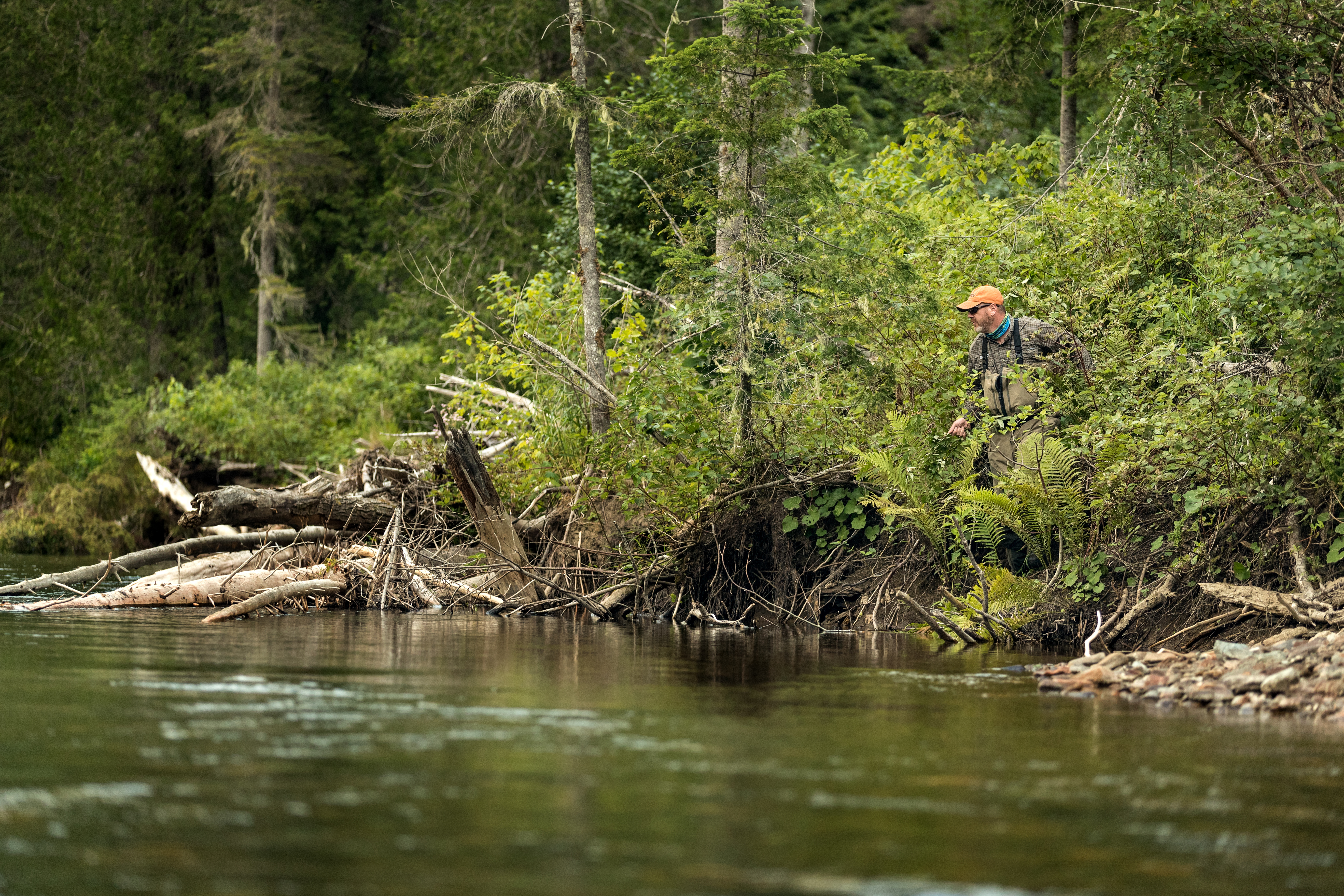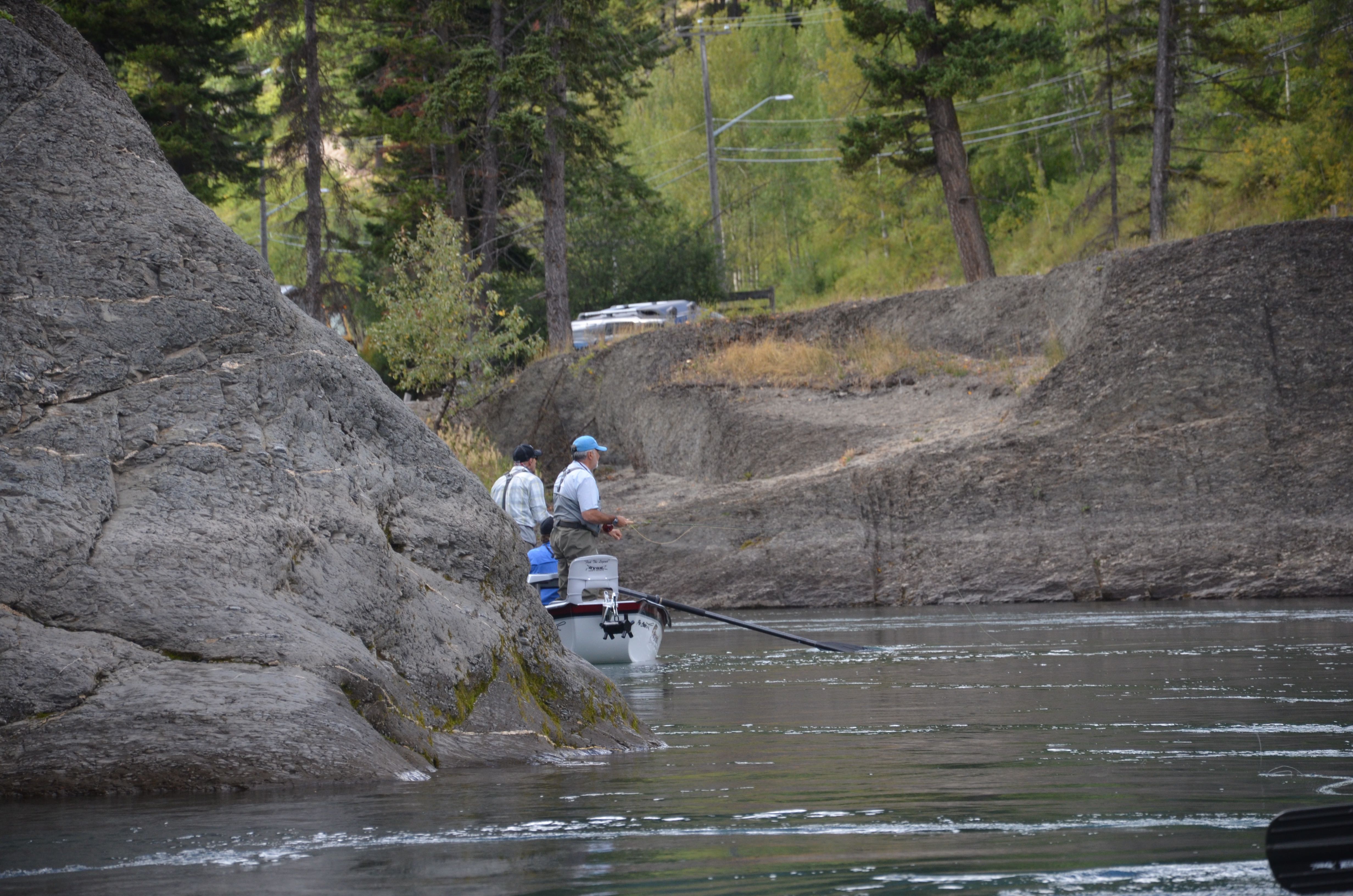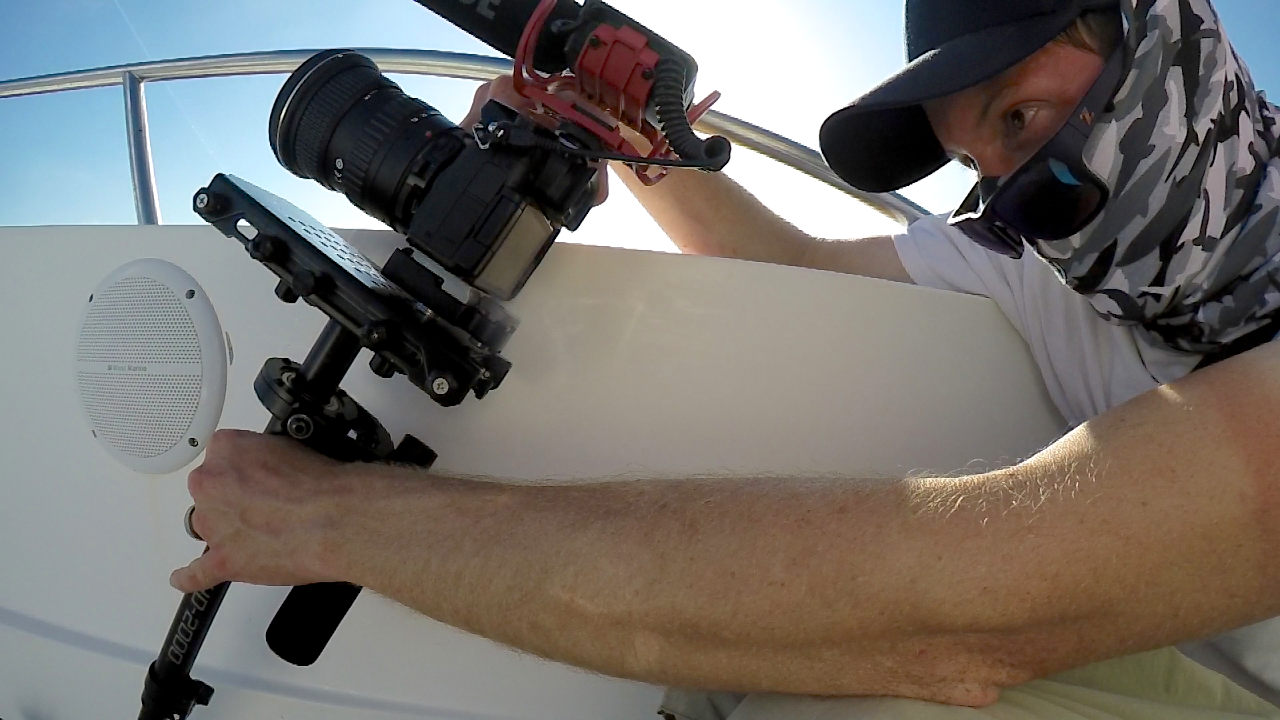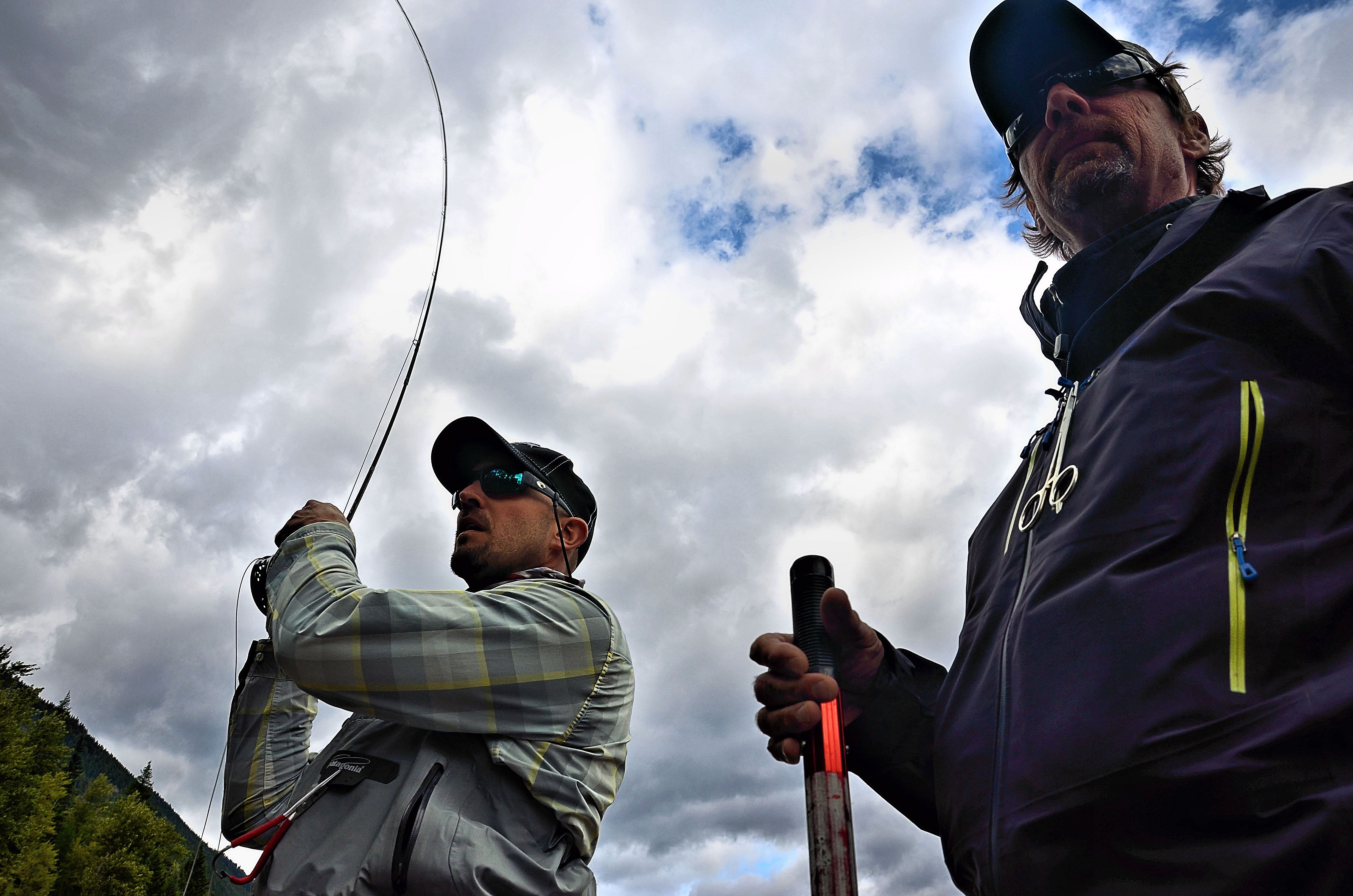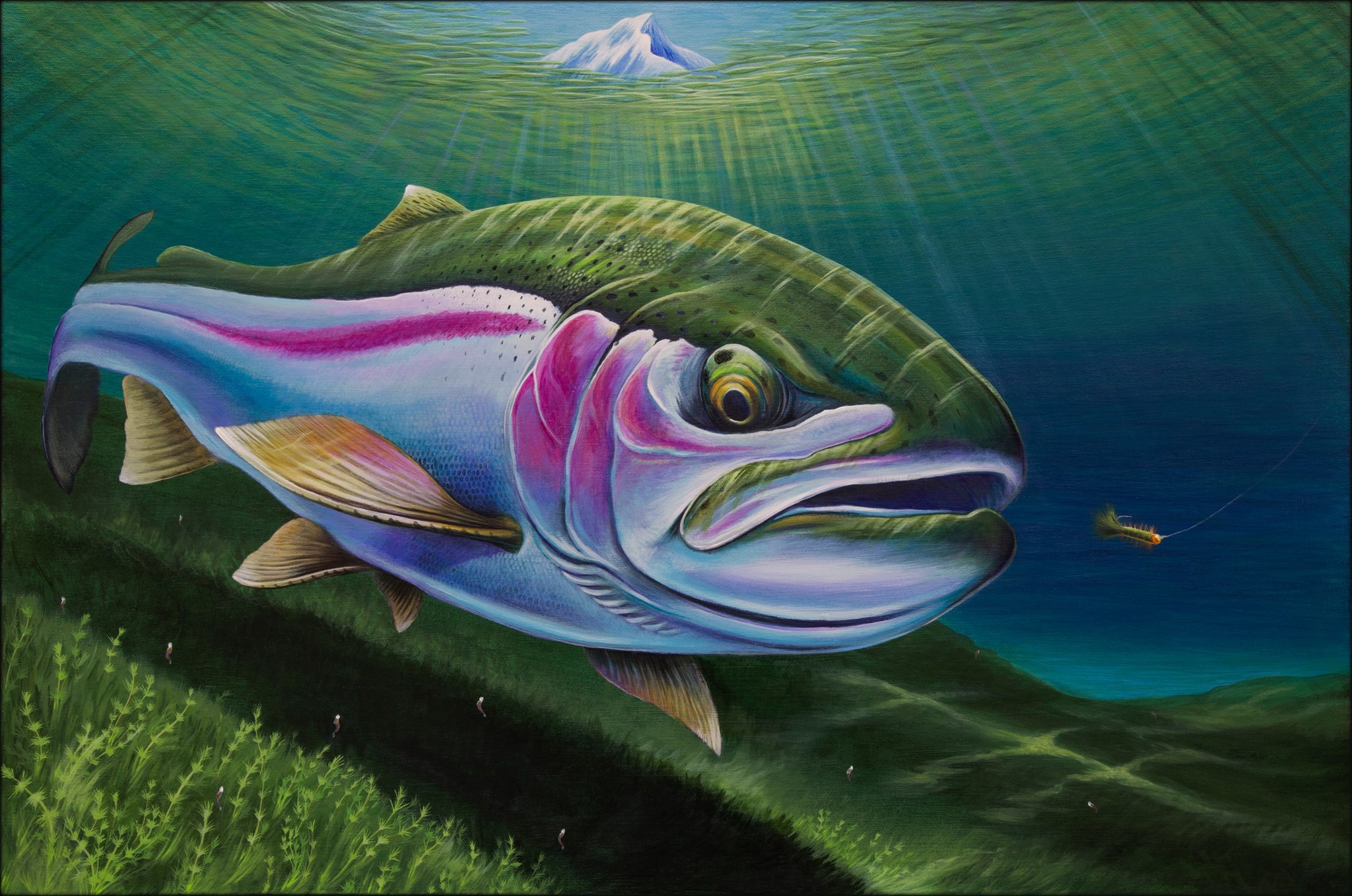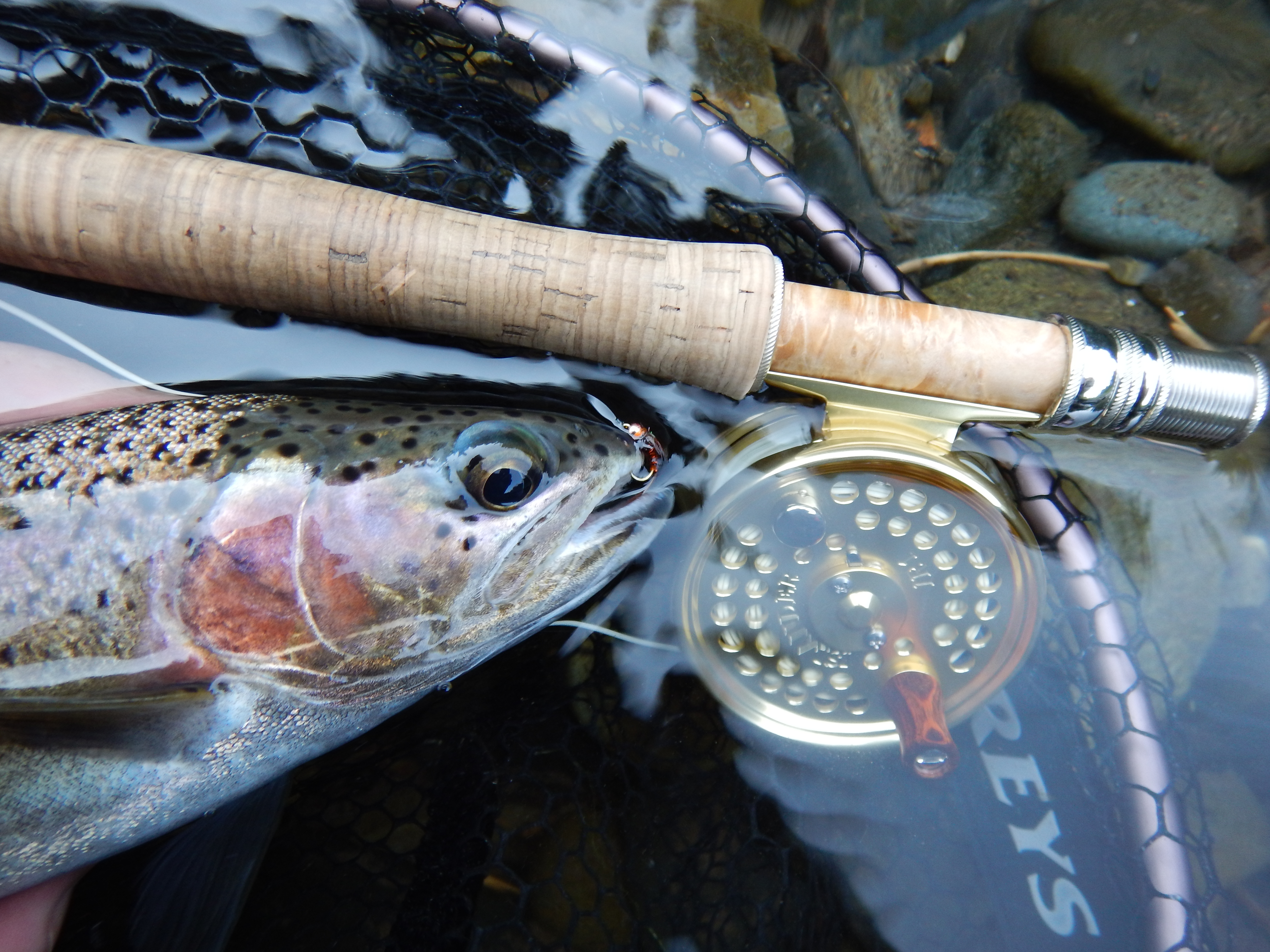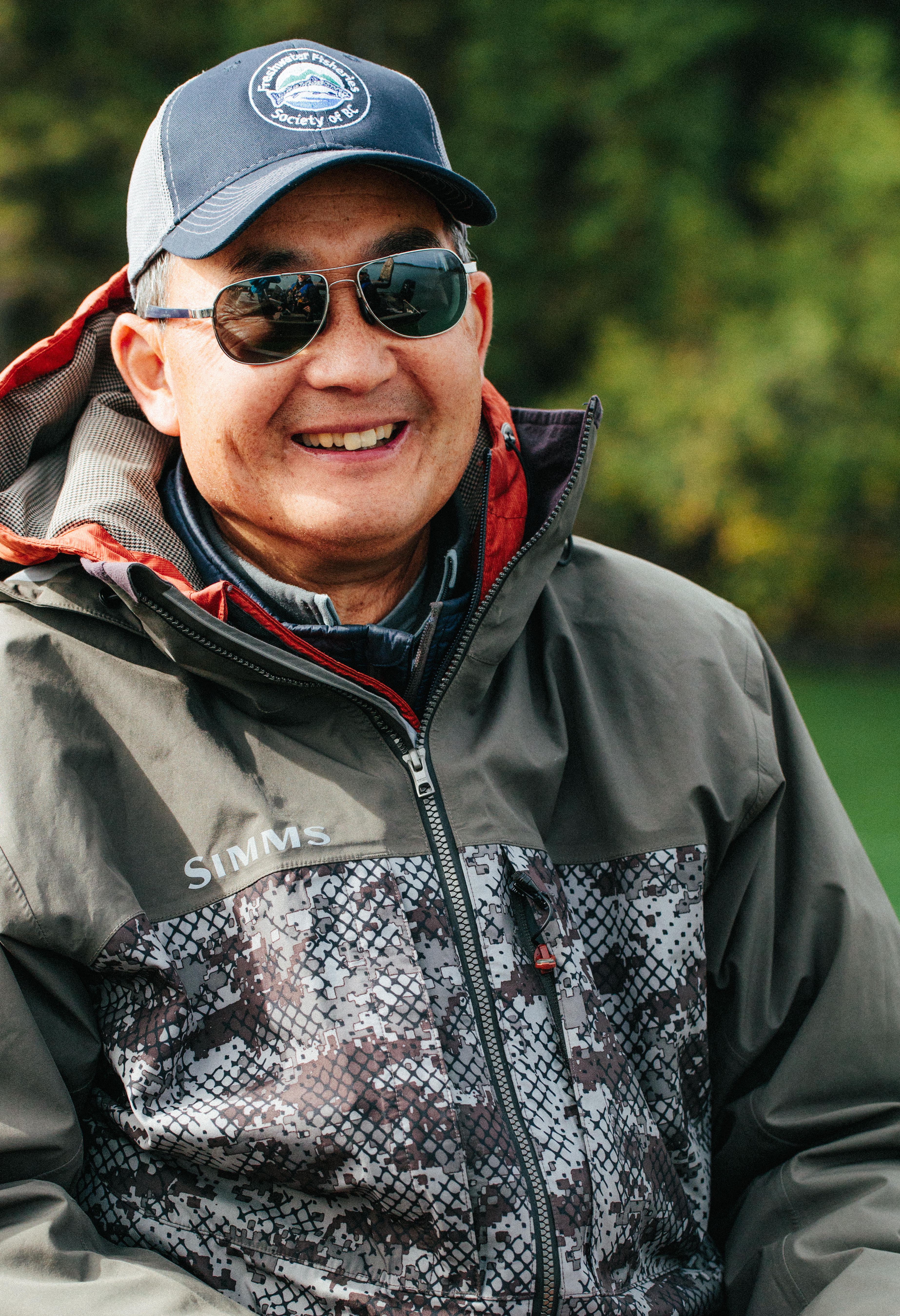“Fishing banks effectively requires a well thought-out plan. First, it’s very easy to send those bank feeding trout fleeing to the middle of the river with a careless approach. Unless you’re fishing from a boat where you can float along quietly while casting to the bank, you need to walk up to banks cautiously with the idea that a trout could be within a foot of the shoreline. This means you often want to make your first few casts before you even step into the water. Sometimes it even means crawling on hands and knees as you approach the bank to avoid spooking feeding fish. If you do start wading, move slowly and as quietly as possible. Another option, if available, is to wade out and cast back in towards the bank. Or in smaller streams simply casting over to the far bank can be a simple way to cover bank-feeding fish.” Rick Hafele–author, lecturer, bug man (photography by Aaron Hitchins)
